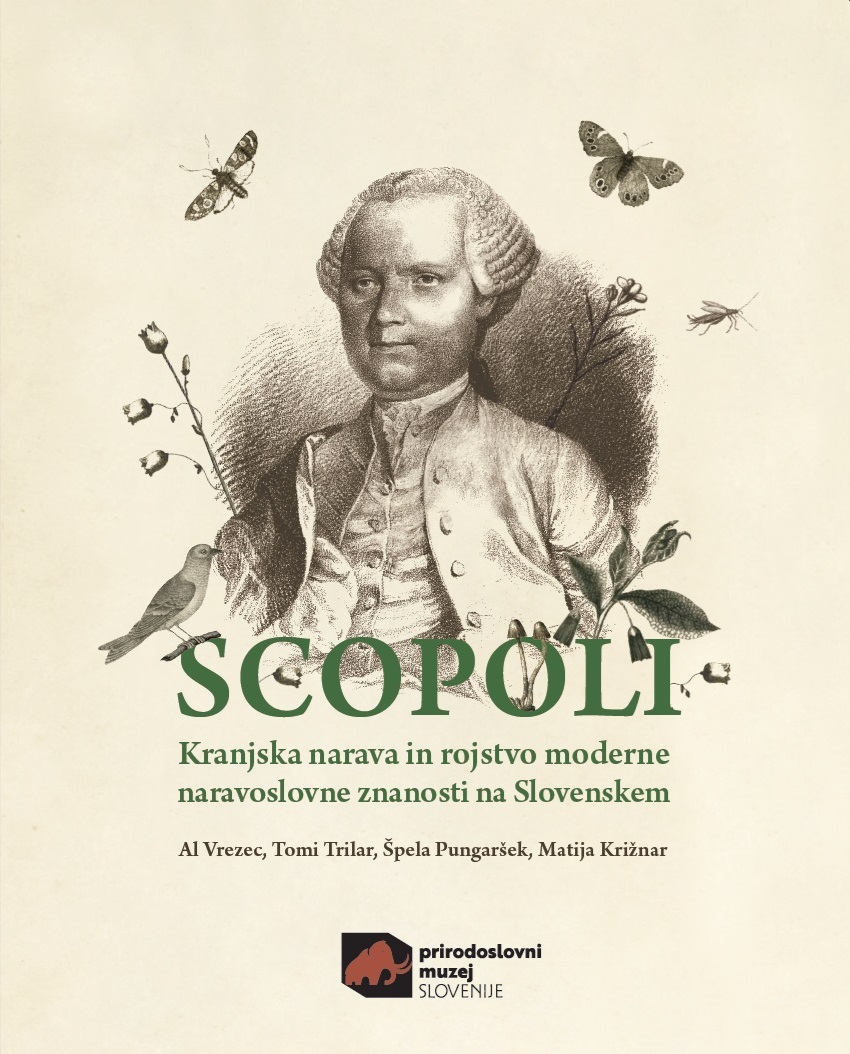Joannes Antonius Scopoli, an outstanding herald of natural history in Slovenia
Exhibition on the 300th anniversary of the birth of polymath J. A. Scopoli (1723–1788), on display from 27 October 2023 to 24 October 2024
The exhibition presents the life of Joannes Antonius Scopoli, a resolute naturalist who spent 15 of the most profuse years of his life in Idrija. Scopoli, however, was not merely a taxonomist and systematist, but was also drawing knowledge from the people of Carniola and wishing to help them with his experiences and findings. Initially, he was fascinated by the nature of Idrija and its surroundings, apart from writing about the organisms inhabiting the Idrija mine. Eventually, his scholarly nature and scientific zeal flared up in him. He hastily collected, researched and identified plant and animal species and often decided for a few days lasting hikes in Carniola and the Goriška region. In his works, he presented the plants, fungi and animals he observed in the field. He was the first to scientifically describe and name fungi, plants and animals in Slovenian territory in a way that is still valid in science today. He presented species from Carniola to the wider world in his works and became an ambassador of Carniola’s nature. As a result of his publications, other researchers began to visit Carniola, and he also filled with enthusiasm for the local nature the followers of the Carniola Enlightenment, who continued his work and only a little later crowned his naturalistic expertise by founding the Provincial Museum of Carniola. The names of the species that were named in his honour by the leading European taxonomists demonstrate how highly Scopoli was appreciated and valued. His descriptions of the living world also comprise nature conservation significance, considering that they depict nature of Slovenia 250 years ago. In this manner, we can track species that have already become extinct in certain regions.
The exhibition is accompanied by the publication Scopoli, Carniolan nature and the birth of modern natural science in Slovenia, which has 224 pages and contains rich pictorial material by several natural history photographers.
The book presents Scopoli’s life and his descriptions of Carniolan nature. It is divided into the periods spent by the naturalist in different places of the Habsburg Monarchy. It focuses on the time spent by him in Carniola and describes landscapes with species he observed there. He depicts Idrija and his travels to Ljubljana and its surroundings, to the Karst, to the Alps and the pre-Alpine world, to the Dinaric world and the surroundings of Lake Cerknica, to Vienna, via Gorica to the sea coast and finally to his native Tyrol. The book continues with a description of his life path after leaving Carniola, when he spent part of his life in Banska Ščavnica in the modern-day Slovakia and part in Pavia in Italy, where he also died. In the chapter Scopoli after Scopoli, we can read how highly Scopoli was valued by European taxonomists, his successors in Carniola and persons who have and still are researching his life. At the end, the book is supplemented by a list of species which were validly described for science by him and are also mentioned in the publication.
The book is for sale at the price of €15.00 at the ticket office of the National Museum of Slovenia and in the webshop.


